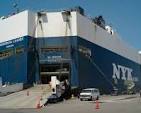
The Vital Role of the Auto Carrier Ship in Global Vehicle Transport
The Auto Carrier Ship: A Vital Link in the Global Vehicle Transport Chain
Auto carrier ships, also known as car carriers or vehicle carriers, play a crucial role in the international transportation of automobiles. These specialized vessels are designed to efficiently and safely transport a large number of vehicles across oceans and seas, connecting manufacturers, dealers, and consumers worldwide.
Auto carrier ships come in various sizes and configurations to accommodate different types of vehicles, from cars and trucks to motorcycles and heavy machinery. They feature multiple decks with ramps or elevators for loading and unloading vehicles, as well as secure storage areas to prevent damage during transit.
One of the key advantages of auto carrier ships is their ability to transport a high volume of vehicles in a single journey, making them a cost-effective and environmentally friendly option compared to individual vehicle transportation. By consolidating multiple vehicles onto a single vessel, auto carrier ships help reduce fuel consumption and emissions per unit transported.
Auto carrier ships operate on established shipping routes that connect major ports around the world. They adhere to strict safety and security standards to ensure the protection of both the vehicles onboard and the crew. Additionally, advanced tracking systems allow shippers and customers to monitor the location and status of their vehicles throughout the journey.
In conclusion, auto carrier ships are an essential component of the global vehicle transport chain, facilitating the movement of automobiles across continents with efficiency and reliability. Their role in connecting automotive markets worldwide underscores their significance in supporting international trade and commerce.
Understanding Auto Carrier Ships: Answers to Common Questions
- 1. How many vehicles can an auto carrier ship transport at once?
- 2. What safety measures are in place to protect vehicles during transit on auto carrier ships?
- 3. How long does it typically take for an auto carrier ship to transport vehicles between major ports?
- 4. Are there any restrictions on the types of vehicles that can be transported on auto carrier ships?
- 5. Can customers track the location and status of their vehicles while they are being transported on an auto carrier ship?
1. How many vehicles can an auto carrier ship transport at once?
Auto carrier ships are designed to transport a varying number of vehicles depending on their size, configuration, and capacity. These specialised vessels can transport anywhere from a few hundred to several thousand vehicles in a single journey. The exact number of vehicles that an auto carrier ship can transport at once is determined by factors such as the size and weight of the vehicles, the layout of the ship’s decks, and any restrictions imposed by safety regulations or operational considerations. Typically, auto carrier ships are optimised to maximise efficiency and utilise every available space to accommodate as many vehicles as possible while ensuring their safe and secure transportation across oceans and seas.
2. What safety measures are in place to protect vehicles during transit on auto carrier ships?
Safety measures are paramount when it comes to protecting vehicles during transit on auto carrier ships. These vessels are equipped with secure storage areas, specially designed vehicle restraints, and advanced monitoring systems to ensure the safety and integrity of the vehicles onboard. Additionally, trained crew members oversee the loading and unloading processes to minimise the risk of damage. Strict adherence to safety protocols, regular maintenance checks, and compliance with international maritime regulations further enhance the protection of vehicles throughout their journey on auto carrier ships.
3. How long does it typically take for an auto carrier ship to transport vehicles between major ports?
The duration for transporting vehicles between major ports via an auto carrier ship can vary depending on several factors such as the distance between ports, weather conditions, shipping route, and vessel speed. Generally, auto carrier ships are designed for efficiency and timely delivery, aiming to transport vehicles within a reasonable timeframe. For example, a typical journey between major ports may range from a few days to a couple of weeks. Shipping companies often provide estimated transit times based on the specific route and destination, allowing customers to plan accordingly and have a clear expectation of when their vehicles will arrive at the designated port.
4. Are there any restrictions on the types of vehicles that can be transported on auto carrier ships?
When it comes to the types of vehicles that can be transported on auto carrier ships, there are typically some restrictions in place. While these vessels are designed to accommodate a wide range of vehicles, including cars, trucks, motorcycles, and heavy machinery, there may be limitations based on size, weight, and special requirements. Some auto carrier ships may not be equipped to transport oversized vehicles or those with specific modifications. It is essential for customers to communicate their vehicle specifications and needs clearly with the shipping company to ensure a smooth and successful transport process while adhering to any restrictions that may apply.
5. Can customers track the location and status of their vehicles while they are being transported on an auto carrier ship?
Yes, customers can track the location and status of their vehicles while they are being transported on an auto carrier ship. Most reputable auto carrier shipping companies provide advanced tracking systems that allow customers to monitor the real-time location and status of their vehicles throughout the journey. These tracking systems offer peace of mind to customers by providing updates on the progress of their vehicles and ensuring transparency in the transportation process. By leveraging technology, customers can stay informed and confident about the safe and timely delivery of their vehicles via auto carrier ship.
